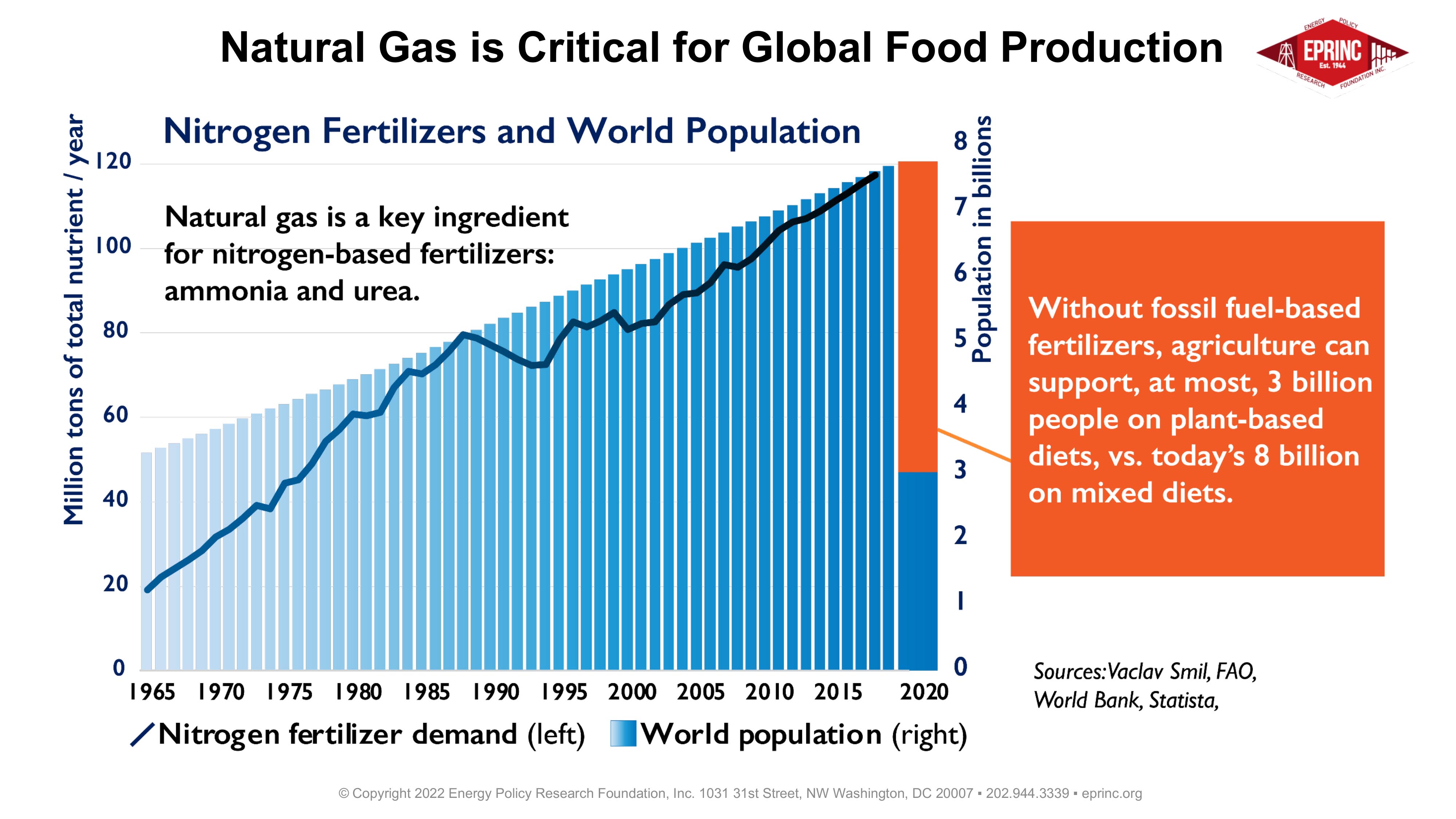U.S. Natural Gas Infrastructure is Critical to Our Economic, Energy, Food and Climate Security
The Russia-driven global crisis of natural gas supplies is pushing the world toward a tipping point in economic, energy, food and climate security. Our vast natural gas and oil resources largely insulate Americans from these dangers, while creating the potential, through exports, to help reduce energy insecurity for our allies. But this can happen only if we reverse current policies that prevent building the enabling infrastructure here at home, including production complexes, pipelines and export facilities.
Yet current Administration policies strictly limit our ability to help alleviate the world's energy woes. Misguided policies have raised nearly insurmountable hurdles to pipeline permitting, have warned the financial community away from fossil fuel investments, have restricted leasing and drilling permits, and have slow-walked export licensing. Despite clear evidence that already-declining U.S. emissions will have relatively little effect on climate, the current Administration seems driven to use climate as the reason to restrain our critical production, transport and export infrastructure investments, ensuring they remain far short of what's necessary to unleash our potential.
Here's a quick summary of the situation in four key threatened security areas:
Economic Security
Natural gas is a primary fuel for power generation and for heating homes and commercial buildings. It is the primary feedstock for fertilizer production. Natural gas is the primary source of heat needed for producing critical materials such as steel and cement. And natural gas and natural gas liquids are the primary inputs to nearly all chemicals and plastics used to manufacture countless items essential to everyday life. As a major component of the cost of living, its affordability has a huge direct impact on consumers' and businesses' economic well-being. Like all commodities, the price of natural gas is determined by the balance of supply and demand. As demand grows, Americans are paying dearly for government policies that reduce supply by limiting production and transport infrastructure.
Energy Security
America's blessing of abundant and affordable natural gas is in stark contrast to the picture in Europe, where native supplies are limited and supplies from Russia are threatened. While the U.S natural gas price has risen 43% from one year ago (from $3.84 to $5.50 per million BTU), the price at the main hub in Europe has skyrocketed by 700% (from $6.75 to $49.85 per million BTU). As a result, Europeans are faced with rationing of gas supplies for heating as winter approaches. Entire industries that rely on natural gas energy inputs are threatened with shutting down and attendant job losses, with growing likelihood of a long and deep recession.
Food Security
Natural gas is the main feedstock for nitrogen-based fertilizers: ammonia and urea, the primary fertilizers used in agriculture. Without fossil fuel-based fertilizers, global agriculture can support, at most, 3 billion people on plant-based diets, versus today's 8 billion on mixed plant and meat diets, according to an expert analysis courtesy of the Energy Policy Research Foundation (EPRINC).

Current global production of fertilizers is approximately 117 million metric tons per year. Each ton requires about 33.5 thousand cubic feet of natural gas, for a total of 4 trillion cubic feet per year, or 11 billion cubic feet per day. Natural gas shortages outside the U.S threaten fertilizer availability and cost in the rest of the world. As a result, crop yields are declining, food prices are climbing, and widespread famine is overtaking the world's poorest regions.
Climate Security
Natural gas emits 50% less carbon than coal when used for power generation. Switching from coal to gas has helped lower US carbon emissions 24% between 2007 and 2020 - a far greater decrease than any other major economy. While the US accounts for 14% of global CO2 emissions, China and India together account for 42%. Ours continue to fall while theirs are rising rapidly. The biggest current threat to climate is India, almost solely reliant on high-carbon domestic coal, as it rapidly expands electricity generation to lift its 1.4 billion people out of energy poverty. Yet while opponents rage about America's use of fossil fuels, they have nothing to say about China's and India's growing reliance on coal.
Conclusion
If the US were to achieve net zero tomorrow, we would have very little impact on total global emissions going forward. Yet our government continues to invoke "climate crisis" as justification to adopt policies that reduce our supply, drive ever-higher energy costs, lower American's standards of living, threaten their energy security, and limit our ability to export natural gas to alleviate food insecurity, replace coal in Asia, and provide alternatives to Russian gas and oil. These costs imposed on our citizens and our economy are steep, but they are buying us nothing but insecurity and misery.
|
|